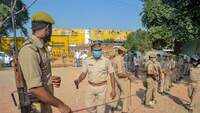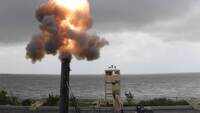
Ranchi: Barely a few weeks after around 2,000 former assistant policemen ended their protest at Morhabadi ground, aspirants of the Jharkhand Armed Police (JAP) began a sit-in protest to demand publication of the second merit list to take forward the stalled recruitment process of 2011.
The aspirants were joined in separately by 33 national and international medalists from different sporting disciplines who staged a daylong dharna and accused the government of denying them jobs despite assurances. The players announced they will give up their medals to chief minister Hemant Soren, who also holds the sports portfolio, coming Wednesday.
These and several others agitations have turned the ground into a hotspot of protests by job-seekers in the recent months, with lockdown further triggering the situation of joblessness in the state. However, despite anti-Covid norms in the state, no measure has been taken at the ground to stop it from turning into a potential superspreader. Till Tuesday, no officials could be seen on the ground to either distribute masks and sanitizers or enforce social distancing norms among the protesters. There are also no plans to get the agitators tested for Covid among a rise in the number of cases in Ranchi district.
Till Tuesday, the district recorded a total of 20,746 cases of which, 3,274 are still active while 17,344 have recovered (cure rate of 83.6%) and 128 have died (death rate of 0.62%) of the virus.
On Monday, over a dozen youths who were recruited as homeguards in Dhanbad district in 2018 began their protest to demand commencement of their training because of which their induction is pending.
Other districts are also witnessing similar protests around lack of jobs at regular intervals. While the Mahagathbandhan constituents had promised to create one lakh jobs every year in their manifestoes before the 2019 assembly election, a spurt in the number of protests is emerging as a concern amid the ongoing pandemic which has rendered the state to stare at lack of funds and scarcity of jobs.
Ranchi-based economist Harishwar Dayal, who undertakes studies and prepares economic survey reports for the state government, said he foresees protests intensifying in the coming days.
Citing a data on joblessness based on a Centre for Monitoring Indian Economy report, he said, “In Jharkhand, the unemployment rate in April remained at 47%, which peaked to 59% in May and June. From July, when the unlock phases began, it started coming down mainly because slow kick-starting of the agri sector. In September, the unemployment rate stands at 8.2%.”
However Dayal said the reason behind increasing protests is because of lack of ‘distress-job avenues’ which is increasing everyone’s dependency on the government. “This means, a government job aspirant earlier used to work alternatively at other places in the private sector while waiting for his final recruitment. Now, with jobs almost shrinking in every private sector, entire dependency of job-seekers is focused on the government. They are losing patience which is leading to protests. This will increase in the coming months,” he said, adding that despite unlocking Jharkhand, several key sectors like tourism, transport, MSME and trade are yet to resume operations, adding up to the crisis.
“Government has to strengthen the placement agencies to be able to create avenues for jobs both in private and public sectors. It is because inducting everyone into government jobs will never be possible as it is directly proportional to the availability of jobs and actual requirement,” said Dayal.
Siraj Datta of Jharkhand Janadhikar Manch, a rights group, said although the government rolled out a few job schemes under MNREGA and for urban employment, their field visits revealed that lack of proper execution failed to reap dividends. “For example, our recent field visits to Chaibasa showed hardly any new works are being done under MNREGA,” he said, adding that even the urban shramik rozgar yojana is yet to kick off and lacks dedicated funds.
(with inputs from Sanjay Sahay)
The aspirants were joined in separately by 33 national and international medalists from different sporting disciplines who staged a daylong dharna and accused the government of denying them jobs despite assurances. The players announced they will give up their medals to chief minister Hemant Soren, who also holds the sports portfolio, coming Wednesday.
These and several others agitations have turned the ground into a hotspot of protests by job-seekers in the recent months, with lockdown further triggering the situation of joblessness in the state. However, despite anti-Covid norms in the state, no measure has been taken at the ground to stop it from turning into a potential superspreader. Till Tuesday, no officials could be seen on the ground to either distribute masks and sanitizers or enforce social distancing norms among the protesters. There are also no plans to get the agitators tested for Covid among a rise in the number of cases in Ranchi district.
Till Tuesday, the district recorded a total of 20,746 cases of which, 3,274 are still active while 17,344 have recovered (cure rate of 83.6%) and 128 have died (death rate of 0.62%) of the virus.
On Monday, over a dozen youths who were recruited as homeguards in Dhanbad district in 2018 began their protest to demand commencement of their training because of which their induction is pending.
Other districts are also witnessing similar protests around lack of jobs at regular intervals. While the Mahagathbandhan constituents had promised to create one lakh jobs every year in their manifestoes before the 2019 assembly election, a spurt in the number of protests is emerging as a concern amid the ongoing pandemic which has rendered the state to stare at lack of funds and scarcity of jobs.
Ranchi-based economist Harishwar Dayal, who undertakes studies and prepares economic survey reports for the state government, said he foresees protests intensifying in the coming days.
Citing a data on joblessness based on a Centre for Monitoring Indian Economy report, he said, “In Jharkhand, the unemployment rate in April remained at 47%, which peaked to 59% in May and June. From July, when the unlock phases began, it started coming down mainly because slow kick-starting of the agri sector. In September, the unemployment rate stands at 8.2%.”
However Dayal said the reason behind increasing protests is because of lack of ‘distress-job avenues’ which is increasing everyone’s dependency on the government. “This means, a government job aspirant earlier used to work alternatively at other places in the private sector while waiting for his final recruitment. Now, with jobs almost shrinking in every private sector, entire dependency of job-seekers is focused on the government. They are losing patience which is leading to protests. This will increase in the coming months,” he said, adding that despite unlocking Jharkhand, several key sectors like tourism, transport, MSME and trade are yet to resume operations, adding up to the crisis.
“Government has to strengthen the placement agencies to be able to create avenues for jobs both in private and public sectors. It is because inducting everyone into government jobs will never be possible as it is directly proportional to the availability of jobs and actual requirement,” said Dayal.
Siraj Datta of Jharkhand Janadhikar Manch, a rights group, said although the government rolled out a few job schemes under MNREGA and for urban employment, their field visits revealed that lack of proper execution failed to reap dividends. “For example, our recent field visits to Chaibasa showed hardly any new works are being done under MNREGA,” he said, adding that even the urban shramik rozgar yojana is yet to kick off and lacks dedicated funds.
(with inputs from Sanjay Sahay)

Coronavirus outbreak
Trending Topics
LATEST VIDEOS
City
 UP: Ink thrown at AAP leader Sanjay Singh after he met Hathras victim's kin
UP: Ink thrown at AAP leader Sanjay Singh after he met Hathras victim's kin  Hathras horror: UP Police file 19 FIRs, allege ploy to push state into turmoil
Hathras horror: UP Police file 19 FIRs, allege ploy to push state into turmoil  India successfully flight tests weapon system SMART from Wheeler Island off the coast of Odisha
India successfully flight tests weapon system SMART from Wheeler Island off the coast of Odisha  24-year-old Delhi man stabbed to death for resisting snatching bid
24-year-old Delhi man stabbed to death for resisting snatching bid
More from TOI
Navbharat Times
Featured Today in Travel
Quick Links
Delhi Air PollutionHaryana Coronavirus Helpline NumberUP Coronavirus Helpline NumberBangalore TemperatureBhopal NewsCoronavirus in DelhiCoronavirus in HyderabadCoronavirus in IndiaCoronavirus symptomsCoronavirusDelhi TemperatureAditya ThackerayShiv SenaFire in MumbaiMumbai RainsArvind KejriwalBangalore FloodsSrinagar encounter
Get the app



